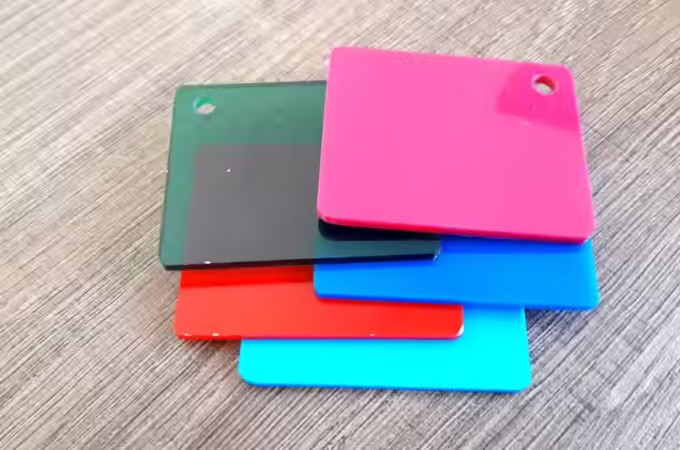
How to Choose the Right Marble Slab for Your Benchtops
Choosing the right marble slab for your benchtop can be a daunting task. With a plethora of options available, it’s easy to feel overwhelmed. However, the right choice can transform your kitchen into a space of elegance and sophistication. This guide will help you navigate through the different types of marble slabs, finishes, vein patterns, latest trends, and maintenance tips to ensure you make the right choice for your benchtop.
Table of Contents
ToggleDifferent Types of Marble Slabs for your Benchtop
Before we delve into the specifics, it’s crucial to understand the various types of marble slabs available in the market. Each type has its unique characteristics, making it suitable for different styles and preferences.
- Carrara Marble: Originating from Italy, Carrara marble is one of the most popular choices for benchtops. It’s known for its soft white hue and subtle grey veining, which adds a touch of elegance to any kitchen. Carrara marble is also relatively affordable, making it a great choice for those on a budget.
- Calacatta Marble: Often confused with Carrara marble, Calacatta marble is also from Italy but has a much whiter base and more dramatic veining. This marble type is considered more luxurious and is typically more expensive.
- Statuario Marble: This is another Italian marble known for its bright white background and striking grey veins. Statuario marble is rarer than Carrara and Calacatta, making it a premium choice for those seeking exclusivity.
- Crema Marfil Marble: Hailing from Spain, Crema Marfil marble offers a warm cream base with subtle veining. It’s perfect for those seeking a warmer, more homely aesthetic.
- Emperador Marble: This Spanish marble is known for its rich brown tones and intricate white veining. Emperador marble is a bold choice, perfect for making a statement with your benchtop.
Each of these marble types has its unique charm and can significantly enhance the aesthetic appeal of your kitchen. The key is to choose one that aligns with your style and the overall design of your kitchen.
Finishes and Veins Pattern for your Benchtop
Once you’ve selected the type of marble that suits your aesthetic and budget, the next crucial step is to consider the finish and vein pattern. These elements play a significant role in the final appearance of your benchtop, influencing not just the color and texture, but also the overall vibe of your kitchen space.
Marble Finishes
Marble slabs can be finished in several ways, each method lending a unique visual and tactile quality to the stone.
- Polished Finish: A polished finish imparts a high-gloss, reflective surface to the marble. This finish enhances the depth of color and the intricacy of the vein patterns, making them stand out vividly. The result is a luxurious, sophisticated look that can make your Stone benchtops the centerpiece of your kitchen. However, it’s worth noting that a polished finish can make any scratches or etches more noticeable.
- Honed Finish: If you’re after a more natural, earthy look, a honed finish might be the right choice. This finish creates a matte or satin surface that’s less shiny than a polished finish but more resistant to scratches and etching. It offers a smooth, velvety feel and a muted, understated elegance that can blend seamlessly with any kitchen decor.
- Leathered Finish: For those seeking a unique, rustic charm, a leathered finish is an excellent option. This finish gives the marble a slightly textured surface, reminiscent of weathered, worn leather. It adds a tactile dimension to your benchtop, making it not just a visual but also a sensory delight.
Vein Patterns
The vein pattern is another defining characteristic of marble slabs. These patterns are naturally occurring, formed by mineral impurities such as clay, silt, sand, iron oxides, or chert. The vein pattern can significantly influence the marble’s overall appearance, ranging from subtle to dramatic.
- Subtle Veining: If your style leans towards minimalism and you prefer a clean, uncluttered look, marble slabs with subtle veining might be the perfect choice. These slabs usually have a consistent, uniform background with thin, delicate veins running through them. The result is a serene, understated elegance that can add a sense of calm and tranquility to your kitchen.
- Dramatic Veining: On the other hand, if you love bold, distinctive designs and want your benchtop to make a strong statement, opt for marble slabs with dramatic veining. These slabs feature a contrasting play of light and dark hues, with thick, prominent veins that create stunning, abstract patterns. A benchtop with dramatic veining can serve as a piece of art, adding a touch of drama and luxury to your kitchen.
Remember, the choice of finish and vein pattern should align with your personal style and the overall design theme of your kitchen. It’s about creating a harmonious balance that brings joy and enhances the functionality of your space.
The Latest Trends and Designs in Marble Benchtops
Marble benchtops have always been a classic choice for kitchens, but like any design element, they too are subject to trends. Staying updated with the latest trends can help you make a choice that is both contemporary and timeless.
- Bookmatched Marble: One of the latest trends in marble benchtops is bookmatching. This involves matching two marble slabs, so they mirror each other, much like an open book. This creates a stunning symmetrical pattern and can add a dramatic visual impact to your kitchen.
- Colored Marble: While white marble remains a classic choice, colored marble is gaining popularity. From subtle shades of beige and pink to bold hues of green and black, colored marble can add a unique touch to your kitchen.
- Thick Slabs: Thick marble slabs are making a comeback. They exude a sense of luxury and grandeur, making your benchtop the focal point of the kitchen.
- Integrated Sinks: Another trend is the use of marble for integrated sinks. This creates a seamless look and can make cleaning easier.
- Vein Matching: This involves matching the veins of the marble across different elements of the kitchen, such as the benchtop, backsplash, and even the kitchen island. This creates a cohesive, harmonious look.
These trends offer a fresh take on the classic marble benchtop, allowing you to create a kitchen that is both modern and timeless.
How to Care for and Maintain Your Marble Benchtops
While marble benchtops are undoubtedly beautiful, they also require proper care and maintenance to keep them looking their best. Here are some tips:
- Sealing: Marble is a porous stone, which means it can absorb liquids and stain easily. To prevent this, it’s important to seal your marble benchtop regularly. This creates a protective barrier and helps maintain its beauty.
- Cleaning: For daily cleaning, use a soft cloth and a mild, pH-neutral cleaner. Avoid using acidic or abrasive cleaners as they can etch the marble surface.
- Avoiding Scratches: Use cutting boards when using knives and place mats or trivets when placing hot items on the benchtop to prevent scratches and heat damage.
- Dealing with Stains: If a spill occurs, blot it up immediately to prevent staining. For stubborn stains, a poultice made from baking soda and water can be used.
- Professional Polishing: Over time, your marble benchtop may lose its shine due to minor scratches and etches. Professional polishing can restore its shine and make it look like new.
By following these tips, you can ensure that your white marble benchtop remains a stunning centerpiece in your kitchen for many years to come.
Conclusion
Choosing the right marble slab for your benchtop is an exciting journey. It’s about more than just picking a slab; it’s about creating a space that reflects your style, enhances your home’s aesthetic, and brings you joy every time you step into your kitchen.
From understanding the different types of marble slabs to exploring various finishes and vein patterns, each step brings you closer to your dream kitchen. Staying updated with the latest trends can help you create a benchtop that’s both contemporary and timeless. And with the right care and maintenance, your marble benchtop can remain a beautiful, functional part of your kitchen for years to come.
Remember, the beauty of marble lies in its natural variations and imperfections. Each slab is unique, telling its own story. So, take your time, explore your options, and choose a marble slab that speaks to you. After all, your kitchen is not just a place for cooking; it’s a space where memories are made, stories are shared, and life is celebrated.
FAQs
1. Which marble is best for a kitchen slab?
The best marble for a kitchen slab often depends on your aesthetic preferences and budget. However, Carrara marble is a popular choice due to its elegant white hue with subtle grey veining. It’s also relatively affordable. If budget isn’t a concern, Calacatta and Statuario marbles offer more dramatic veining and are considered more luxurious.
2. How thick should marble slab be for countertops?
The thickness of marble slabs for countertops typically ranges from 1.5cm (2/3 inch) to 3cm (1 1/4 inches). The choice depends on the application and the support structure underneath. However, 3cm thick slabs are most commonly used for kitchen countertops due to their durability and resistance to breakage.
3. What is the normal size of a marble slab?
The size of a marble slab can vary based on the quarry and the block of stone being cut. However, most marble slabs used for countertops are approximately 9 feet by 5 feet. It’s important to note that the size can significantly influence the design, especially for large kitchens or islands.
4. Are there different grades of marble countertops?
Yes, marble countertops are graded based on several factors, including the type of marble, the thickness of the slab, the finish, and the amount of veining. Higher grade marble typically has a more uniform color and fewer veins, while lower grade marble has more natural variations.
5. Which slab is good for the kitchen?
While marble is a popular choice for kitchen slabs due to its beauty and elegance, granite and quartz are also excellent options. Granite is known for its durability and heat resistance, while quartz offers a wide range of colors and patterns. The best choice depends on your aesthetic preferences, usage habits, and budget.
6. How do I choose a kitchen slab?
Choosing a kitchen slab involves considering several factors. First, decide on the material that suits your lifestyle and aesthetic preferences. Next, consider the color and pattern that will complement your kitchen’s design. Also, think about the finish that will work best for your usage habits. Finally, ensure the slab fits within your budget. It’s recommended to view the slab in person before making a decision to fully appreciate the color and pattern.





